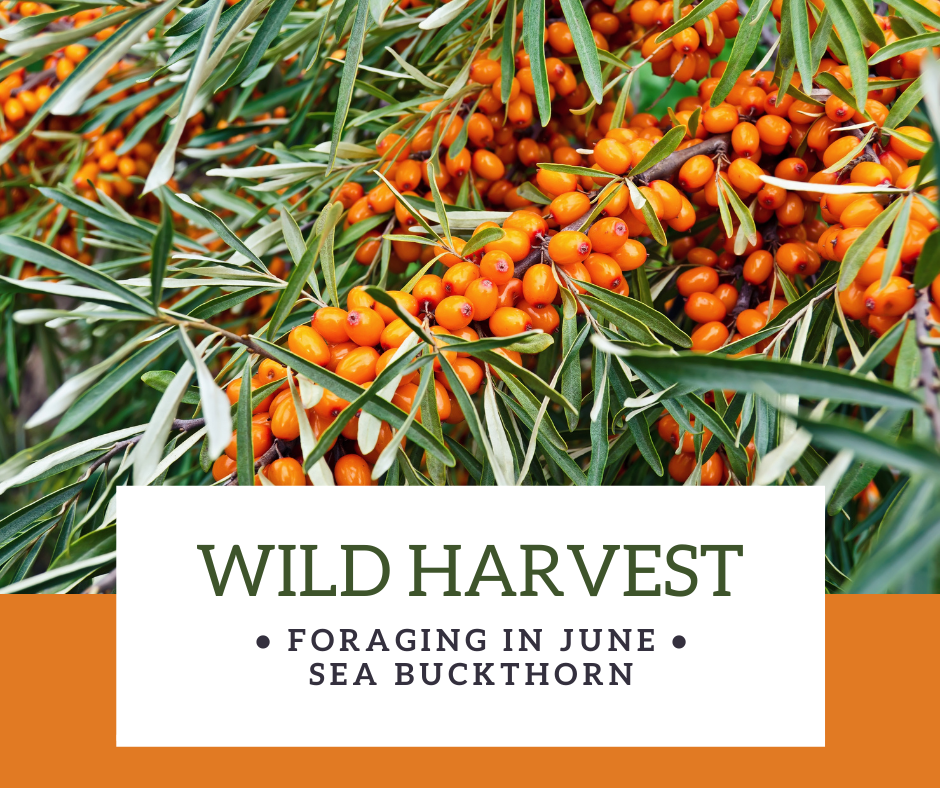
Sea-buckthorn is a very spiny shrub, native to sand dunes along the east coast and planted more widely to help stabilise dune systems. It forms dense thickets with thorny twigs and in autumn it displays an abundance of bright orange berries.
Sea Buckthorn is an essential pick for coastal foragers.
The shrub is exceptionally hardy and tolerates both high concentrations of salt and low winter temperatures. Sea buckthorn very often prevents other larger plants from competing with it and creates impenetrable thickets. Take care when collecting the berries, because the shrub has big thorns.
Sea buckthorn berries are very sour, with a flavour somewhere between lemon and tangerine. They can be eaten raw but are best cooked or combined with other ingredients to mask the sourness.
The berries are a rich source of vitamins, minerals, antioxidants and other bio-active compounds. In fact, sea buckthorn berries have more vitamin C than oranges and more beta-carotene content than carrots!
Commercially, the berry juice is used as a component of drug supplements rich in vitamin C and it is listed as an ingredient in cosmetics used to treat skin conditions. At home, the juice make a superb salad dressing, sauce and marinade for game and fish.
Sea buckthorn berries can also be preserved into jelly, syrup and honey.
RECIPE:
- 1 l of sea-buckthorn juice
- 800 g of sugar
Pour the juice into a pan.
Add the sugar and bring to the boil, stirring continuously until the sugar dissolves completely.
Then filter to remove the pulpy bits
Pour filtered juice back into the pan and boil until it reaches the setting point.
Pour cooked jelly into sterile jars and seal
If you are going to forage for Sea Buckthorn please follow the simple guidelines:
- Always be sure you are sure of the plant before you pick it and never eat any plant you are unsure of.
- Leave plenty behind for wildlife. Sea Buckthorn berries provide food for wintering thrushes.
- Make sure you have permission to pick
- Only pick where plants are plentiful

